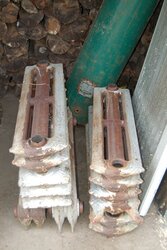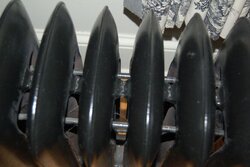Jeff S
Feeling the Heat
Has anyone had any experience modifying these radiators,I just bought several of the same style and would like to add sections to some while making others smaller but I'm not sure how the sections are attached,best I can figure is that they are pressed together,if this the case not sure how delicate they would be to pry apart.Perhaps they are threaded with short pieces of pipe.Any suggestions would be helpful.



